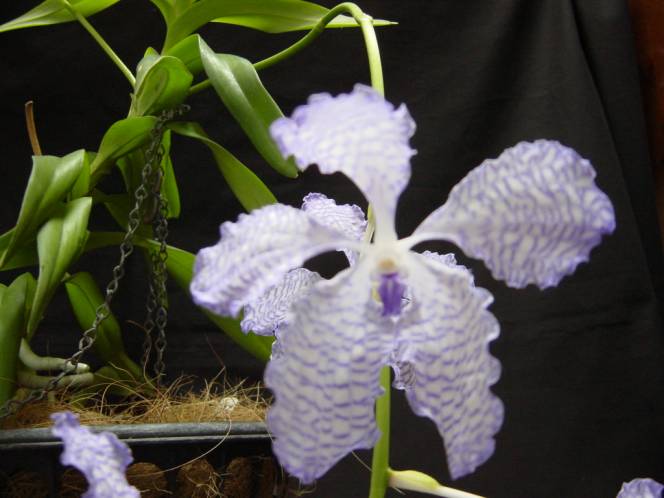Vanda coerulea.

Discovered by Wm. Griffith as an epiphyte growing on oak trees at 1250m.-(3850ft.) in the Khasia Hills, India when collecting during 1837. Considered by many to be their favourite Vanda. It has been used extensively in hybrid production.
Described by Lindl. in 1847 from a dried specimen sent to him collected by Griffith some ten years after its discovery. Sir. Joseph Hooker & Dr. T. Thomson re-discovered it at the same location in 1851. Introduced into cultivation by Veitch & Sons after receipt of large quantities from their collector Thom. Lobb. During 1851.
In cultivation stout leaves 40-60cm.-(16-24”) are common as is an inflorescence of equal size with 6 to 15 flowers, 7-10cm.-(3-4”) across; whitish pale blue, tessellated in a darker shade of blue, the lip is a much darker blue, the column is white with a violet suffusion below the stigma.
Epiphytic growth suits this cooler growing Vanda, requires goodish light; 60% humidity, very good air movement, regular (daily) misting of the plants roots (2-4 mistings daily in very hot weather) – (roots should not be allowed to dry out when grown epiphytically); should daily misting not be available .
This species will perform equally well in a basket of a sphagnum/co-co moss mix. Give an occasional weak feed. Otherwise not difficult to bring into flower regularly.